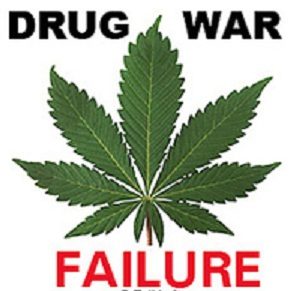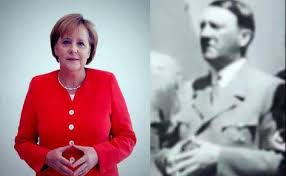
The most absurd thing I ever saw in my life was in Brisbane in mid-December, 2001. On a sweltering Queensland summer day I walked to the corner dairy to buy a soft drink. The neighbourhood I was staying in was having a competition; the object being to best decorate your house for the season.
What the season apparently meant to Queenslanders was evident by the piles of fake snow, strings of bright lights and plywood sleds replete with papier-mache reindeer and a Santa in a thick red coat. It’s no better in New Zealand, because the core problem is that we celebrate Christmas in entirely the wrong season.
Christmas is known as Yule in Northern Europe, from where we inherited the cultural tradition. The Yule festival is celebrated at the same time of the calendar, which is of course the middle of winter in Northern Europe. The reason why this festival evolved in the cultures of the North is because, on the 24/25th of December in the Northern Hemisphere, the Sun noticeably begins to climb from the nadir it reached a few days previously at the Winter Solstice.
This means that Christmas has a spiritual meaning that makes perfect sense to a Northern European in late December: the time of peak darkness has passed, and now light returns to the world. This is why the Yule festival is characterised by lights. The lights symbolise the human spirit that burns brightly in even the darkest times. And now that the darkest times are over, it’s time to rejoice.
The reason why Christmas is the “season of good cheer” is precisely because it represents a point in the natural cycle of the seasons at which the most difficult period, as measured by length of the day, has been overcome. It’s also the natural time for people to come together because it is very cold. Coming together in the cold to celebrate the return of the light in the days after the Winter Solstice has probably been a tradition for thousands of years before Abrahamism came to Europe and called the festival Christmas.
Therefore, celebrating Christmas in the middle of summer playing cricket and drinking cold drinks at the beach while stinking of sunscreen makes no sense at all. If anything, midsummer is a time of mourning in the European North.
Likewise Easter. The reason why we celebrate Easter with chocolate rabbits even today is because Easter is a fertility ritual (the word Easter is connected to the word estrogen, the female fertility hormone, and is celebrated at the full moon, the Moon being also a symbol of the feminine).
Celebrating a fertility ritual in early April makes sense if you live in the Northern Hemisphere. It is, after all, the advent of spring there, and after a long and dreary winter people are coming outside again and noticing how nice the girls look with less clothing in a bit of sunlight, especially if you’ve just spent a long winter with nothing but your sisters, mother and grandmother for company. In Northern Europe this is still commonly celebrated with a dance around the maypole (although this happens on Midsommar in Sweden and not early May), an obvious phallic symbol.
Halloween is another example that makes no sense. Although this is not a public holiday and is not likely to be, the theme of it suits the Northern Hemisphere and not the South. The last day of October is also about six weeks after the Autumn Equinox in the Northern Hemisphere, and therefore marks the day when the warmth begins to follow the light into the depths of winter.
This is why it is themed with symbols of death and foreboding. The point of the ritual is to treat the small death of winter as something fun and light-hearted, in order to lessen the sorrow one feels towards one’s inevitable big, and final, death. One enjoys Halloween to the degree that one is unafraid of death – this is why it is usually celebrated mostly by the young and by the old.
In New Zealand it feels ridiculous to drive down a street in late October when the evenings are just becoming very bright and to see young people in dark clothing trying to look spooky. We ought to celebrate Halloween on the last day of April, when the shadows are becoming long and the trees are red and yellow. This would make sense as the approaching winter would provide the right backdrop for a ghoulish festival.
My conviction is that New Zealanders of all cultural heritages must accept that if they are loyal to this country then they are Polynesians first and any cultural traditions from ancestral lands must be adapted to Aotearoa. The penalty for failing to do so is cognitive dissonance and a deeply unfortunate disconnection from the spirituality of the natural world.
In so far as we celebrate British seasonal events in a Southern Hemisphere country it appears as if our hearts are still back in Britain. The first thing we should correct in order to fix this is to celebrate our public holidays on days of the calendar that make sense for New Zealand, not for London.
After all, if there’s one thing that New Zealanders of all ancestries can agree on, it’s that New Zealand is dark in June and cold in August, and bright in December and warm in February.
Suggestion for a 14-day public holiday schedule:
(1) 01 JAN – New Year’s Day.
(2) 06 FEB – Waitangi Day.
(3) Some weekend in late March to serve as Queen’s Birthday Weekend (we don’t actually celebrate the Queen’s Birthday on the Queen’s Birthday so can change this).
(4) 25 APR – ANZAC Day.
(5) 31 APR – A Southern All-Souls Eve along the lines of the Northern European Halloween.
(6) Matariki in late May/early June – this is extremely important as it represents the first efforts of anyone in New Zealand to associate a time of spiritual practice with a regularly occurring natural phenomenon (the rise of the Pleiades cluster when viewed from NZ).
(7, 8, 9) 3 days over winter to replace Christmas, probably the 24 – 26 JUN. This would mean we have time off to celebrate having survived the winter with our friends and family.
(10) 09 AUG – This is the day that George Nepia played his last All Blacks Test. The point of a national holiday on this date would be to celebrate New Zealand’s sporting achievements in all disciplines and to celebrate how sport has broken down barriers of class and race in New Zealand. It would also break up the period between Christmas and Easter.
(11, 12) 2 days for Easter – the Friday before the weekend closest to the first full moon immediately after the autumn equinox in late September and the Monday immediately following that. This sounds complicated but it’s literally the reverse of what is done now. This would therefore fall in late September on most occasions.
(13) 4th Monday of October – Labour Day.
(14) 31 DEC – New Year’s Eve.



